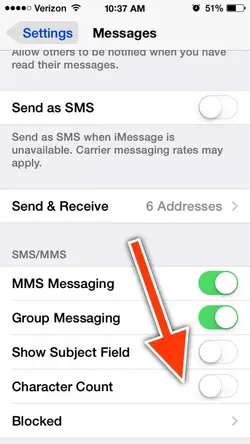[h=3]Message size[
edit][/h]Transmission of short messages between the SMSC and the handset is done whenever using the
Mobile Application Part (MAP) of the
SS7 protocol.[SUP]
[39][/SUP] Messages are sent with the MAP MO- and MT-ForwardSM operations, whose payload length is limited by the constraints of the signaling protocol to precisely 140
octets (140 octets * 8 bits / octet = 1120 bits). Short messages can be encoded using a variety of alphabets: the default
GSM 7-bit alphabet, the 8-
bit data alphabet, and the 16-bit
UCS-2 alphabet.[SUP]
[40][/SUP] Depending on which alphabet the subscriber has configured in the handset, this leads to the maximum individual short message sizes of 160 7-
bit characters, 140 8-bit characters, or 70 16-bit characters. GSM 7-bit alphabet support is mandatory for GSM handsets and network elements,[SUP]
[40][/SUP] but characters in languages such as Arabic, Chinese, Korean, Japanese, or Cyrillic alphabet languages (e.g., Russian, Serbian, Bulgarian, etc.) must be encoded using the 16-bit
UCS-2 character encoding (see
Unicode).
Routing data and other
metadata is additional to the payload size. Larger content (
concatenated SMS, multipart or segmented SMS, or "long SMS") can be sent using multiple messages, in which case each message will start with a
User Data Header (UDH) containing segmentation information. Since UDH is part of the payload, the number of available characters per segment is lower: 153 for 7-bit encoding, 134 for 8-bit encoding and 67 for 16-bit encoding. The receiving handset is then responsible for reassembling the message and presenting it to the user as one long message. While the standard theoretically permits up to 255 segments,[SUP]
[41][/SUP] 6 to 8 segment messages are the practical maximum, and long messages are often billed as equivalent to multiple SMS messages. Some providers have offered length-oriented pricing schemes for messages, however, the phenomenon is disappearing.
Short Message Service - Wikipedia, the free encyclopedia













